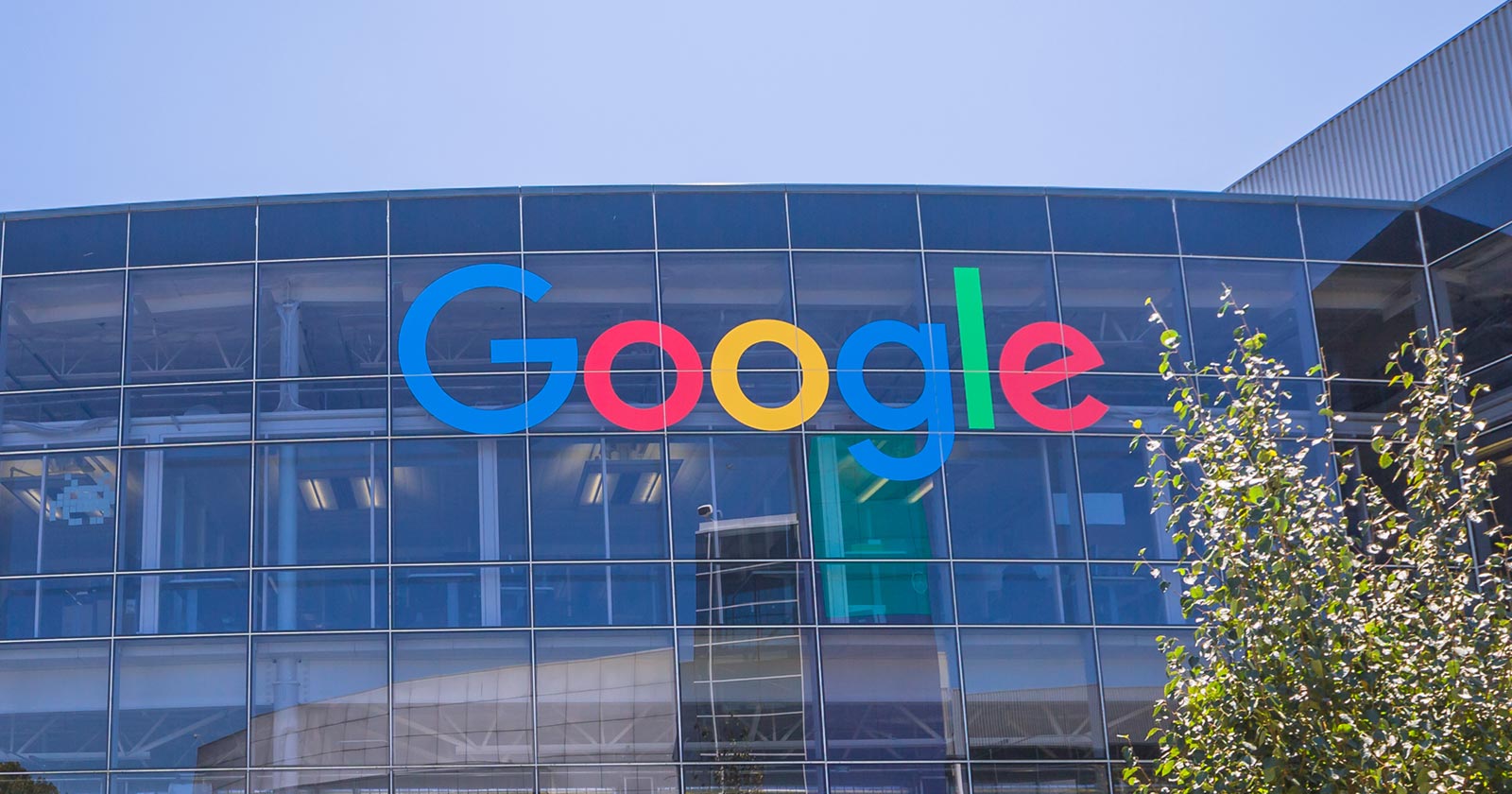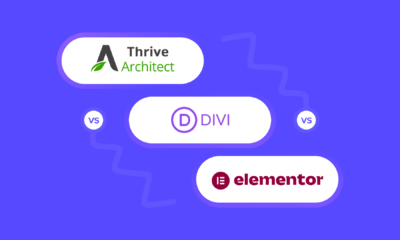SEO
How to effectively optimize content

30-second summary:
- By using a range of techniques to optimize your content, you can make it easier for both search engines and users to consume your written text
- Taking the time to plan your content topics and conduct extensive keyword research can make a big impact when it comes to performance
- You should always write for the user first, but you can still implement SEO best practices while doing so
- Understand the role of accessibility in written content and the importance of providing as much contextual information as possible
Content optimization is essential because it helps users and search engines to easily understand your written text. In addition to this, there are a huge number of other advantages you can gain by optimizing content. You can increase engagement rates, obtain links, generate brand recognition, and appear as an expert in your field. All while improving your organic search rankings.
Sounds good, right?
Let’s find out how you can benefit from all this, and more, by effectively optimizing your content.
Think about your topic
Before you write content, you need to decide on the topic you’re going to cover. This might sound obvious, but it’s worth thinking about. Spending some extra time planning will help you to identify specific subjects and talking points you can discuss. This will help shape your keyword research, which plays a huge role in creating SEO-friendly content.
At this stage, it’s worth thinking about what you want to focus on. You want the topic to be broad enough that you can produce detailed content about it, but not so broad that you won’t be able to cover it all. It might be the case that you need to split the topic into multiple articles. Or if your topic is too vague, you may need to home in on something more specific.
Conduct detailed keyword research
Keyword research is and always has been an essential part of producing good content. It’s the basis for content production and making sure you’re ranking for relevant keywords that you have a good chance of competing for. When performing keyword research, you should be on the lookout for several different types of keywords.
Short-tail keywords
Also known as the head or main keyword, short-tail keywords are made up of a maximum of three words. These keywords will typically have large volumes, but because of this, they have high search difficulties and therefore are highly competitive.
Because these keywords have a broad search intent, they should be used alongside more precise keywords to make it clear to users and search engines exactly what your page is about.
Long-tail keywords
Long-tail keywords are terms made up of more than three keywords and are much more specific than short-tail keywords. These keywords generally have lower volumes, but they also have lower search difficulties, which means they are less competitive.
These keywords are important because they allow you to target a user’s exact search intent. A user who searches for the short-tail keyword ‘motorbike’ might be trying to buy a motorbike, find more information about a model or simply look at a picture of one.
A long tail variation of this search might be ‘Motorbike helmet with Bluetooth speakers’, which narrows down the user’s search intent to a very specific product.
LSI keywords
LSI (Latent Semantic Indexing) keywords are keywords that are loosely related to your head keyword. While these keywords are relevant to your main keyword and the overall topic, they’re not necessarily directly related.
Instead, they’re used thematically to build broader topical depth and make it clear to both search engines and users what the overarching topic of your content is. If your short-tail keyword is the trunk of a tree and your long-tail keywords are the branches, then the LSI keywords are the twigs.
LSI keywords branch out from the main keyword but are still relatable enough to provide additional context and information. These can be a bit trickier to find, but by using the suggested search feature in search engines, you can get your hands on them.
Local keywords
These keywords won’t always be relevant, but if you’re looking to boost your rankings for local terms, then including local keywords is essential.
Luckily, this is a lot easier than implementing other keywords. You simply add your location into your content along with your main keyword. But remember, don’t stuff in keywords for the sake of it! Try to mix it up, using different variations wherever possible.
People also ask (PAA) key phrases
Like the suggested search function, the people also ask feature is an excellent way to obtain relevant keywords and phrases. These are phrases that users have searched for before, so we know that they hold value and have good search volumes.
So, how can we use this to our advantage?
By creating content that targets these queries, you’ll be increasing your chances of appearing in Search Engine Results Pages for these terms.
And the best thing is, these questions are often different to the main keywords you would normally target. This means your content will be more varied and unique and will specifically target pain points that your audience is looking for.
Always write for the user first
People skim content more than ever these days, so it’s important to keep it short, snappy, and engaging. The days of writing solely for search engines are long gone, and Google’s recent helpful content update has really cemented this.
This update emphasizes the importance of writing for the user first. Your focus should be on creating engaging, informative and easy-to-digest content. You can always go through your work afterward and make tweaks and edits to optimize for SEO best practice.
Just be careful not to make it too robotic as search engines can spot keyword stuffing from a mile away! Keep it free-flowing and try to insert keywords in a natural way; both users and search engines will appreciate it.
Include alt-text for your images
If you’re including images in your articles (which you should be) then it’s essential that you add alt text. Alt text is the written copy that describes an image to users who can’t see them or if the image fails to load.
First and foremost, alt text is a core principle of web accessibility for visually impaired users. Its secondary function is to provide additional context and descriptions to search engine crawlers, allowing them to index an image properly.
As some images contain critical information or provide context for the rest of the page, it’s crucial to take the time to write appropriate alt text. By doing this, you are adhering to accessibility standards and improving your SEO at the same time.
Remember internal and external links
Another way to optimize your content is to include internal and external links.
Internal links can be used to take users toward relevant, closely related pages that will provide them with further information they might be looking for. This makes it easier for users to navigate your website and helps to create a strong site structure.
External links are also useful because they can be used to point toward external data and sources of information that back up your content. In the eyes of a search engine, the use of valuable external links improves the authority of your content.
Just make sure you have a healthy balance of follow and no-follow tags on your external links.
Consider site speed
Site speed is always important when it comes to performing well in search engines. No one likes a slow website, and users are more impatient than ever when it comes for waiting for things to load. Even an extra second’s loading time could put some users off and cause them to bounce from your website.
You should regularly review your site speed and make sure your website is performing well. Consider removing unnecessary code and compressing large images as these are common factors that contribute to slow site speed.
Break up your content
Imagine you land on a webpage and the first thing you see is a wall of text with no paragraphs, headings, or subheadings. It’s not exactly going to draw you in, is it?
Users are more likely to consume your content if it’s broken up into digestible chunks. This makes it much easier for them to quickly take in the information they’re looking for.
It also provides you an opportunity to weave keywords into your headings and subheadings, which are strong signals for search engines. It’s a win-win!
Keep things up to date
Remember, even when you’ve produced a well-written, SEO-friendly article, the hard work doesn’t stop there. Google LOVES it when you go back and update existing content because it shows you’re keeping your website up to date.
Has there been a new development that affects the topic of your post? Or perhaps some new data that you could use to explore a new angle? If there is some way that you can update your article and add information that will benefit your users, then it’s worth taking the time to do so.
Enjoy the benefits of optimized content
Now that you know how to optimize your content, you’ll have a better chance of ranking for your chosen keywords. In addition to this, your users will be more likely to stay on your website for longer, increasing your engagement rates and the time spent consuming your content.
As a result of consistently producing high-quality content, you may well find that your site is attracting more links from external sources. This will boost your domain authority and help you to appear as a trustworthy and authoritative source of information.
So, if you’re looking for ways to give your content a little boost, consider implementing some of these techniques into your writing. It won’t always be possible to include everything we’ve mentioned here, but if you write for the user first and take care with your keywords, you’ll be on the right track.
Rob Phillips is Digital Manager at Coast Digital.
Subscribe to the Search Engine Watch newsletter for insights on SEO, the search landscape, search marketing, digital marketing, leadership, podcasts, and more.
Join the conversation with us on LinkedIn and Twitter.
SEO
Google On Hyphens In Domain Names

Google’s John Mueller answered a question on Reddit about why people don’t use hyphens with domains and if there was something to be concerned about that they were missing.
Domain Names With Hyphens For SEO
I’ve been working online for 25 years and I remember when using hyphens in domains was something that affiliates did for SEO when Google was still influenced by keywords in the domain, URL, and basically keywords anywhere on the webpage. It wasn’t something that everyone did, it was mainly something that was popular with some affiliate marketers.
Another reason for choosing domain names with keywords in them was that site visitors tended to convert at a higher rate because the keywords essentially prequalified the site visitor. I know from experience how useful two-keyword domains (and one word domain names) are for conversions, as long as they didn’t have hyphens in them.
A consideration that caused hyphenated domain names to fall out of favor is that they have an untrustworthy appearance and that can work against conversion rates because trustworthiness is an important factor for conversions.
Lastly, hyphenated domain names look tacky. Why go with tacky when a brandable domain is easier for building trust and conversions?
Domain Name Question Asked On Reddit
This is the question asked on Reddit:
“Why don’t people use a lot of domains with hyphens? Is there something concerning about it? I understand when you tell it out loud people make miss hyphen in search.”
And this is Mueller’s response:
“It used to be that domain names with a lot of hyphens were considered (by users? or by SEOs assuming users would? it’s been a while) to be less serious – since they could imply that you weren’t able to get the domain name with fewer hyphens. Nowadays there are a lot of top-level-domains so it’s less of a thing.
My main recommendation is to pick something for the long run (assuming that’s what you’re aiming for), and not to be overly keyword focused (because life is too short to box yourself into a corner – make good things, course-correct over time, don’t let a domain-name limit what you do online). The web is full of awkward, keyword-focused short-lived low-effort takes made for SEO — make something truly awesome that people will ask for by name. If that takes a hyphen in the name – go for it.”
Pick A Domain Name That Can Grow
Mueller is right about picking a domain name that won’t lock your site into one topic. When a site grows in popularity the natural growth path is to expand the range of topics the site coves. But that’s hard to do when the domain is locked into one rigid keyword phrase. That’s one of the downsides of picking a “Best + keyword + reviews” domain, too. Those domains can’t grow bigger and look tacky, too.
That’s why I’ve always recommended brandable domains that are memorable and encourage trust in some way.
Read the post on Reddit:
Read Mueller’s response here.
Featured Image by Shutterstock/Benny Marty
SEO
Reddit Post Ranks On Google In 5 Minutes

Google’s Danny Sullivan disputed the assertions made in a Reddit discussion that Google is showing a preference for Reddit in the search results. But a Redditor’s example proves that it’s possible for a Reddit post to rank in the top ten of the search results within minutes and to actually improve rankings to position #2 a week later.
Discussion About Google Showing Preference To Reddit
A Redditor (gronetwork) complained that Google is sending so many visitors to Reddit that the server is struggling with the load and shared an example that proved that it can only take minutes for a Reddit post to rank in the top ten.
That post was part of a 79 post Reddit thread where many in the r/SEO subreddit were complaining about Google allegedly giving too much preference to Reddit over legit sites.
The person who did the test (gronetwork) wrote:
“…The website is already cracking (server down, double posts, comments not showing) because there are too many visitors.
…It only takes few minutes (you can test it) for a post on Reddit to appear in the top ten results of Google with keywords related to the post’s title… (while I have to wait months for an article on my site to be referenced). Do the math, the whole world is going to spam here. The loop is completed.”
Reddit Post Ranked Within Minutes
Another Redditor asked if they had tested if it takes “a few minutes” to rank in the top ten and gronetwork answered that they had tested it with a post titled, Google SGE Review.
gronetwork posted:
“Yes, I have created for example a post named “Google SGE Review” previously. After less than 5 minutes it was ranked 8th for Google SGE Review (no quotes). Just after Washingtonpost.com, 6 authoritative SEO websites and Google.com’s overview page for SGE (Search Generative Experience). It is ranked third for SGE Review.”
It’s true, not only does that specific post (Google SGE Review) rank in the top 10, the post started out in position 8 and it actually improved ranking, currently listed beneath the number one result for the search query “SGE Review”.
Screenshot Of Reddit Post That Ranked Within Minutes
Anecdotes Versus Anecdotes
Okay, the above is just one anecdote. But it’s a heck of an anecdote because it proves that it’s possible for a Reddit post to rank within minutes and get stuck in the top of the search results over other possibly more authoritative websites.
hankschrader79 shared that Reddit posts outrank Toyota Tacoma forums for a phrase related to mods for that truck.
Google’s Danny Sullivan responded to that post and the entire discussion to dispute that Reddit is not always prioritized over other forums.
Danny wrote:
“Reddit is not always prioritized over other forums. [super vhs to mac adapter] I did this week, it goes Apple Support Community, MacRumors Forum and further down, there’s Reddit. I also did [kumo cloud not working setup 5ghz] recently (it’s a nightmare) and it was the Netgear community, the SmartThings Community, GreenBuildingAdvisor before Reddit. Related to that was [disable 5g airport] which has Apple Support Community above Reddit. [how to open an 8 track tape] — really, it was the YouTube videos that helped me most, but it’s the Tapeheads community that comes before Reddit.
In your example for [toyota tacoma], I don’t even get Reddit in the top results. I get Toyota, Car & Driver, Wikipedia, Toyota again, three YouTube videos from different creators (not Toyota), Edmunds, a Top Stories unit. No Reddit, which doesn’t really support the notion of always wanting to drive traffic just to Reddit.
If I guess at the more specific query you might have done, maybe [overland mods for toyota tacoma], I get a YouTube video first, then Reddit, then Tacoma World at third — not near the bottom. So yes, Reddit is higher for that query — but it’s not first. It’s also not always first. And sometimes, it’s not even showing at all.”
hankschrader79 conceded that they were generalizing when they wrote that Google always prioritized Reddit. But they also insisted that that didn’t diminish what they said is a fact that Google’s “prioritization” forum content has benefitted Reddit more than actual forums.
Why Is The Reddit Post Ranked So High?
It’s possible that Google “tested” that Reddit post in position 8 within minutes and that user interaction signals indicated to Google’s algorithms that users prefer to see that Reddit post. If that’s the case then it’s not a matter of Google showing preference to Reddit post but rather it’s users that are showing the preference and the algorithm is responding to those preferences.
Nevertheless, an argument can be made that user preferences for Reddit can be a manifestation of Familiarity Bias. Familiarity Bias is when people show a preference for things that are familiar to them. If a person is familiar with a brand because of all the advertising they were exposed to then they may show a bias for the brand products over unfamiliar brands.
Users who are familiar with Reddit may choose Reddit because they don’t know the other sites in the search results or because they have a bias that Google ranks spammy and optimized websites and feel safer reading Reddit.
Google may be picking up on those user interaction signals that indicate a preference and satisfaction with the Reddit results but those results may simply be biases and not an indication that Reddit is trustworthy and authoritative.
Is Reddit Benefiting From A Self-Reinforcing Feedback Loop?
It may very well be that Google’s decision to prioritize user generated content may have started a self-reinforcing pattern that draws users in to Reddit through the search results and because the answers seem plausible those users start to prefer Reddit results. When they’re exposed to more Reddit posts their familiarity bias kicks in and they start to show a preference for Reddit. So what could be happening is that the users and Google’s algorithm are creating a self-reinforcing feedback loop.
Is it possible that Google’s decision to show more user generated content has kicked off a cycle where more users are exposed to Reddit which then feeds back into Google’s algorithm which in turn increases Reddit visibility, regardless of lack of expertise and authoritativeness?
Featured Image by Shutterstock/Kues
SEO
WordPress Releases A Performance Plugin For “Near-Instant Load Times”

WordPress released an official plugin that adds support for a cutting edge technology called speculative loading that can help boost site performance and improve the user experience for site visitors.
Speculative Loading
Rendering means constructing the entire webpage so that it instantly displays (rendering). When your browser downloads the HTML, images, and other resources and puts it together into a webpage, that’s rendering. Prerendering is putting that webpage together (rendering it) in the background.
What this plugin does is to enable the browser to prerender the entire webpage that a user might navigate to next. The plugin does that by anticipating which webpage the user might navigate to based on where they are hovering.
Chrome lists a preference for only prerendering when there is an at least 80% probability of a user navigating to another webpage. The official Chrome support page for prerendering explains:
“Pages should only be prerendered when there is a high probability the page will be loaded by the user. This is why the Chrome address bar prerendering options only happen when there is such a high probability (greater than 80% of the time).
There is also a caveat in that same developer page that prerendering may not happen based on user settings, memory usage and other scenarios (more details below about how analytics handles prerendering).
The Speculative Loading API solves a problem that previous solutions could not because in the past they were simply prefetching resources like JavaScript and CSS but not actually prerendering the entire webpage.
The official WordPress announcement explains it like this:
Introducing the Speculation Rules API
The Speculation Rules API is a new web API that solves the above problems. It allows defining rules to dynamically prefetch and/or prerender URLs of certain structure based on user interaction, in JSON syntax—or in other words, speculatively preload those URLs before the navigation. This API can be used, for example, to prerender any links on a page whenever the user hovers over them.”
The official WordPress page about this new functionality describes it:
“The Speculation Rules API is a new web API… It allows defining rules to dynamically prefetch and/or prerender URLs of certain structure based on user interaction, in JSON syntax—or in other words, speculatively preload those URLs before the navigation.
This API can be used, for example, to prerender any links on a page whenever the user hovers over them. Also, with the Speculation Rules API, “prerender” actually means to prerender the entire page, including running JavaScript. This can lead to near-instant load times once the user clicks on the link as the page would have most likely already been loaded in its entirety. However that is only one of the possible configurations.”
The new WordPress plugin adds support for the Speculation Rules API. The Mozilla developer pages, a great resource for HTML technical understanding describes it like this:
“The Speculation Rules API is designed to improve performance for future navigations. It targets document URLs rather than specific resource files, and so makes sense for multi-page applications (MPAs) rather than single-page applications (SPAs).
The Speculation Rules API provides an alternative to the widely-available <link rel=”prefetch”> feature and is designed to supersede the Chrome-only deprecated <link rel=”prerender”> feature. It provides many improvements over these technologies, along with a more expressive, configurable syntax for specifying which documents should be prefetched or prerendered.”
See also: Are Websites Getting Faster? New Data Reveals Mixed Results
Performance Lab Plugin
The new plugin was developed by the official WordPress performance team which occasionally rolls out new plugins for users to test ahead of possible inclusion into the actual WordPress core. So it’s a good opportunity to be first to try out new performance technologies.
The new WordPress plugin is by default set to prerender “WordPress frontend URLs” which are pages, posts, and archive pages. How it works can be fine-tuned under the settings:
Settings > Reading > Speculative Loading
Browser Compatibility
The Speculative API is supported by Chrome 108 however the specific rules used by the new plugin require Chrome 121 or higher. Chrome 121 was released in early 2024.
Browsers that do not support will simply ignore the plugin and will have no effect on the user experience.
Check out the new Speculative Loading WordPress plugin developed by the official core WordPress performance team.
How Analytics Handles Prerendering
A WordPress developer commented with a question asking how Analytics would handle prerendering and someone else answered that it’s up to the Analytics provider to detect a prerender and not count it as a page load or site visit.
Fortunately both Google Analytics and Google Publisher Tags (GPT) both are able to handle prerenders. The Chrome developers support page has a note about how analytics handles prerendering:
“Google Analytics handles prerender by delaying until activation by default as of September 2023, and Google Publisher Tag (GPT) made a similar change to delay triggering advertisements until activation as of November 2023.”
Possible Conflict With Ad Blocker Extensions
There are a couple things to be aware of about this plugin, aside from the fact that it’s an experimental feature that requires Chrome 121 or higher.
A comment by a WordPress plugin developer that this feature may not work with browsers that are using the uBlock Origin ad blocking browser extension.
Download the plugin:
Speculative Loading Plugin by the WordPress Performance Team
Read the announcement at WordPress
Speculative Loading in WordPress
See also: WordPress, Wix & Squarespace Show Best CWV Rate Of Improvement
-

 SEARCHENGINES6 days ago
SEARCHENGINES6 days agoMore Google March 2024 Core Update Ranking Volatility
-

 PPC6 days ago
PPC6 days agoCompetitor Monitoring: 7 ways to keep watch on the competition
-

 PPC5 days ago
PPC5 days agoA History of Google AdWords and Google Ads: Revolutionizing Digital Advertising & Marketing Since 2000
-

 WORDPRESS6 days ago
WORDPRESS6 days agoThrive Architect vs Divi vs Elementor
-

 PPC6 days ago
PPC6 days ago31 Ready-to-Go Mother’s Day Messages for Social Media, Email, & More
-

 WORDPRESS5 days ago
WORDPRESS5 days agoTurkish startup ikas attracts $20M for its e-commerce platform designed for small businesses
-

 MARKETING4 days ago
MARKETING4 days agoRoundel Media Studio: What to Expect From Target’s New Self-Service Platform
-

 MARKETING6 days ago
MARKETING6 days agoHow To Adapt Your SEO and Content Strategies for SGE and AI Experiences















You must be logged in to post a comment Login